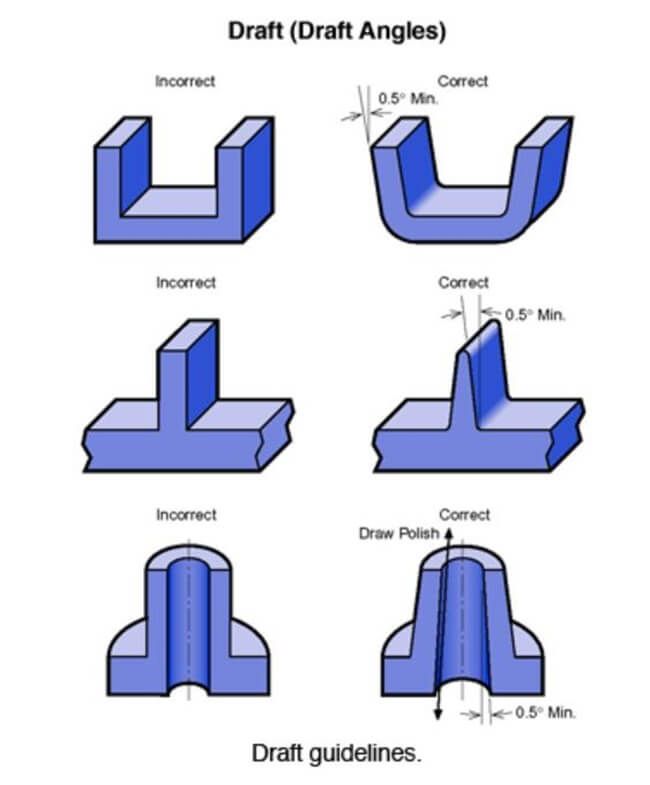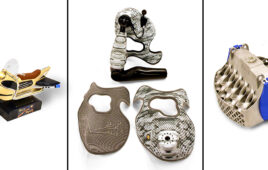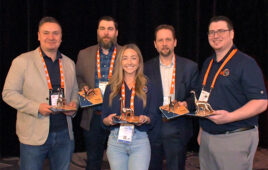Once a part has been molded, now it must be removed from the mold piece. Ideally, that happens without damage to the part.
Injection molding experts use a number of techniques to eject parts. One way is to angle the walls of a part from the parting line; this is known as drafting.
Drafting is important because, for the most part, you don’t want any part surface to be exactly 90 degrees to the line of draw on the mold. Otherwise, you risk damage to the part, such as drag marks, which make it difficult to remove the part from the mold.
How much angle (draft) you design for the walls often depends on the application. A general rule is to have at least one degree for every inch of mold depth.
Here are several design options to consider:
— The mold should be designed to open so that the part stays on the B side. For the A-side of the mold, add more draft to ensure the part stays in the B-side of the mold.
–If the part has a lot of texture, more draft is needed. More draft angle ensures the part releases on ejection without drag as it moves off the molding surface.
–Parts that feature small or deep ribs can be challenging to eject without damage to those features. Consider adding more draft.
–Consider adding draft in general. If the amount of draft does not affect either the function or the aesthetics of a part, it could benefit ejection.
–Don’t forget about small features. Holes, for example, can cause a part to stick, so additional draft may be needed.
Filed Under: Make Parts Fast





